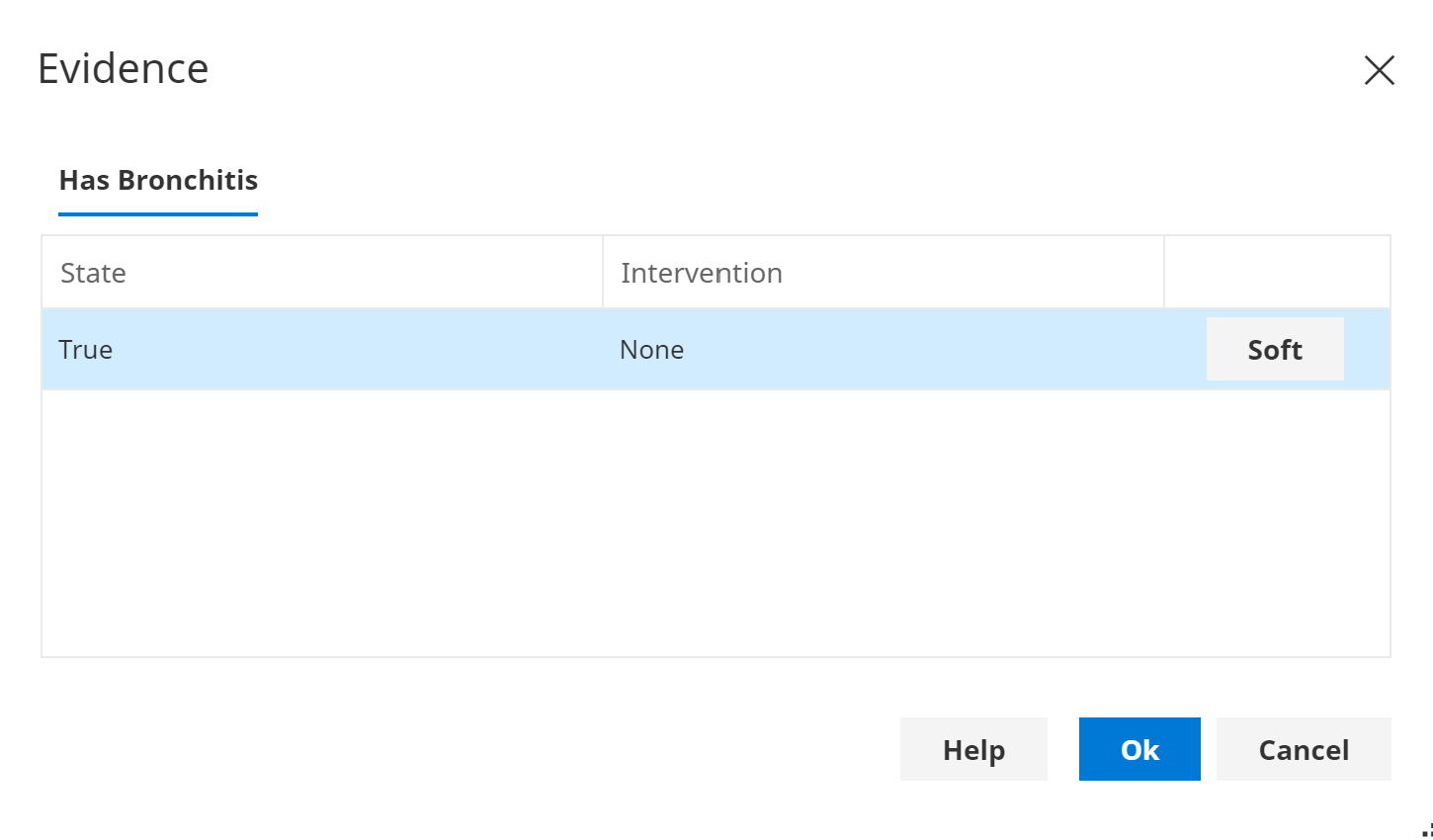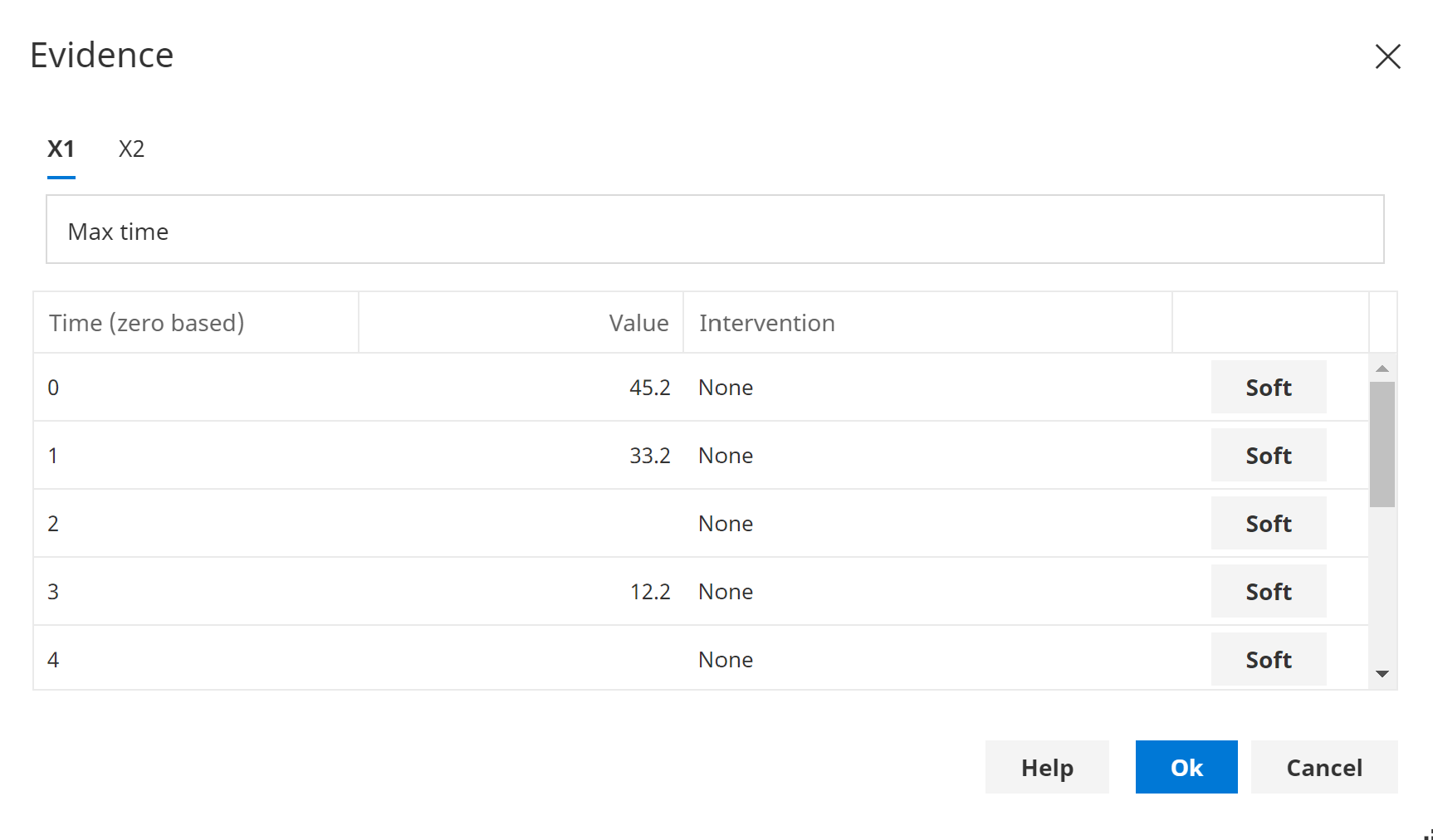Evidence
Introduction
The term Evidence refers to information that is currently known about the variables in a Bayesian network.
Support
- Missing data
- Discrete evidence
- Continuous evidence
- Discrete soft/virtual evidence
- Interventions (Do evidence)
- Time base evidence
Setting evidence
There are a number of ways evidence can be set:
- Data explorer using scenarios saved in data sources such as databases and spreadsheets.
- Network viewer
- Click a checkbox in a node
- Click the probability bar
- Click a chart
- Evidence dialog
To set evidence on multiple states within the same variable hold down the Ctrl key. A particular state can be excluded by holding down the Alt key. An intervention can be set by holding down the Shift key.

Missing Data
Data in both Bayesian networks and Dynamic Bayesian networks, can be missing. The term missing, is equivalent to unobserved, unknown or null.
If a value is not displayed for a variable, this implies the current state is missing.
Soft/virtual evidence
Bayes Server allows soft evidence to be entered on discrete variables in both Bayesian networks and Dynamic Bayesian networks.
Soft evidence, specifies that the exact state of the discrete variable is unknown, however information exists about the chances of the variable being in particular states.
To enter soft evidence, click the drop down next to the discrete variable, and select Soft Evidence. This will launch the Soft evidence window.
Temporal Evidence
For temporal variables in a Dynamic Bayesian network, evidence can be set on the same variable at different times. i.e. Time Series or sequence data.
Note that time is zero based in Bayes Server. (i.e. the first three times are t=0, t=1 and t=2).

Interventions
For information on using interventions, please see Interventions.